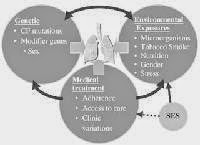AGE OF DIAGNOSIS: 75% of CF patients diagnosed by AGE 2!
NEW NEWBORN SCREENINGS!
in 2001 less than 10% of cases were diagnosed in infancy..
in 2011, 60% of cases were diagnosed in infancy.
WHAT THEY FIND.. DIAGNOSIS MUST HAVE....
●Clinical SYMPTOMS consistent with CF in ONE organ (lungs, pancreas, liver, intestines, skin)
AND
●Evidence of ABNORMAL CFTR:
•Increased sweat chloride on skin ≥60 mmol/L (2 times!)
•2- disease-causing mutations in CFTR from each parent's genes
•Abnormal nasal potential difference
HOW THEY FIND IT....
First...Blood Tests:
A provider will take a small amount of blood generally by poking the heel
What they are looking for...
- CF is associated with increased levels of IRT (immunoreactive trypsinogen)
- IRT is a protein that is produced by the pancreas
If levels are high there are two options depending on the state you live in:
- they will repeat the blood test in 2 weeks to rule out other causes of high IRT
- they will complete a DNA test of the blood looking for mutations in CFTR
Results from DNA test:
- positive if they find 2 mutations in CFTR (one from mom, one from dad)
- negative with only 1 or 0 mutations in CFTR
Next.. SWEAT tests:
A provider will perform a test to make a small part of the baby's skin sweat for collection.
- Applies an odorless, non-harmful chemical that causes sweat production (called Pilocarpine) over small area on arm or leg
- covers this area with plastic wrap to promote moisture
- removes the covering and collects the sweat with gauze or filter paper
- sample sent to lab for analysis
Results from sweat tests:
For newborns and infants younger than six months of age:
●
≤29 mmol/L: Normal (CF very unlikely)
●
30 to 59 mmol/L: Intermediate (Possible CF)
●
≥60 mmol/L: Abnormal (Diagnosis of CF)
For infants ≥6 months, children, and adults:
●
≤39 mmol/L: Normal (CF very unlikely)
●
40 to 59 mmol/L: Intermediate (Possible CF)
●
≥60 mmol/L: Abnormal (Diagnosis of CF)
Generally this information can be useful in diagnosis but sometimes a 3rd test may be performed..
Third.. Nasal Potential Difference Test (NFD)
- a non-harmful, non-painful electrode is placed in the nose and a voltage is obtained before and after different chemicals are applied to determine the difference in chloride movement
- determining the movement of chloride is a way to check on the CFTR gene since it codes for this protein channel transporter of chloride
SYMPTOMS of CF in NEWBORNS: (will require testing)
- 20% of CF patients had Meconium Ileus at birth
- however...80-90% of newborns with meconium ileum have CF
- meconium: infant poop, blocks the digestive system
- 45% of CF patients had respiratory symptoms at birth
- 28% of CF patients were diagnosed as Failure to Thrive (not meeting growth and development milestones despite proper nutrition)
LATE ONSET OF CF: adults typically present with gastrointestinal symptoms, diabetes mellitus, and infertility
References:
Katkin, J. (2014, June 25). Cystic fibrosis: Clinical manifestations and diagnosis. Retrieved January 30, 2015, from http://www.uptodate.com/contents/cystic-fibrosis-clinical-manifestations-and-diagnosis?source=search_result&search=cystic fibrosis diagnosis&selectedTitle=1~150
References:
Katkin, J. (2014, June 25). Cystic fibrosis: Clinical manifestations and diagnosis. Retrieved January 30, 2015, from http://www.uptodate.com/contents/cystic-fibrosis-clinical-manifestations-and-diagnosis?source=search_result&search=cystic fibrosis diagnosis&selectedTitle=1~150


